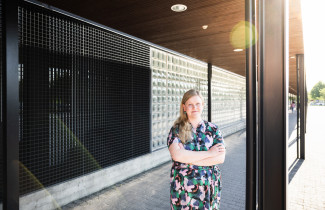In Finland, some residential neighbourhoods and urban schools have become segregated by social class, but very little is known about how this segregation is experienced by young people and adults in such schools. Published today, a new book now sheds light on how segregation and inequality are visible in the everyday life of schools in disadvantaged neighbourhoods. Edited by Sonja Kosunen, Sara Juvonen, Heidi Huilla and Marja Peltola of the University of Eastern Finland and Tampere University, the book delves into the manifestations of inequality in the everyday life of young people and school staff.
“It is vital to understand that children are not attending ‘the Finnish comprehensive school’, most often discussed as a uniform system, but that each pupil is attending a specific school in a specific neighbourhood that has its local characteristics. Location sets schools apart in terms of how they are able to provide education,” Professor Sonja Kosunen says.
Schools generally find it easy to provide support to middle-class youth, as their schoolwork is often supported at home, too. These young people also have access to financial resources that enable them to pursue various leisure activities. Schools are also well-versed in providing support to working-class youth, and that is seen as a key mission of the Finnish comprehensive school.
“However, schools also deal with challenges related to concrete disadvantage, such as poverty, and that’s when the school can no longer be the sole source of support for these children and young people,” Project Researcher Sara Juvonen notes.
Postdoctoral Researcher Heidi Huilla points out that in order for young people with disadvantaged backgrounds to have faith in their success and future prospects in general, they and their families need not only strong support provided by the school, but also interprofessional collaboration involving, e.g., social work and youth work.
Funding is a decisive factor
Funding is a decisive factor when it comes to preventing and dismantling inequalities in education. The book shows how needs-based funding is essential to schools in disadvantaged neighbourhoods.
However, the school principals interviewed for the study talk about how needs-based funding is often perceived as insufficient, and how it sometimes can only be used to fill the gaps of core funding. Whilst needs-based funding does enable the recruitment of auxiliary staff, in practice, there is not enough money for hiring special education teachers, psychologists and school social workers, i.e., professionals who, according to the principals, are most urgently needed in schools.
“Schools in disadvantaged neighbourhoods need considerable resources for their work. International research evidence shows that the amount of additional funding available to schools in disadvantaged urban areas is a significant factor in supporting the success of young people attending them. Therefore, schools in disadvantaged neighbourhoods should be on the agenda of everyone involved in national politics,” Kosunen points out.
Schools in disadvantaged neighbourhoods should be on the agenda of everyone involved in national politics.
Sonja Kosunen
Professor
School enables encounters between people from different backgrounds
Segregation affects not only the schools and school staff, but especially the children and young people attending them. The book analyses how social class and ethnic background play a role in shaping young people’s peer relationships and how, for example, the school’s way of assigning pupils to different teaching groups may further emphasise these differences.
“When it comes to young people’s leisure activities and living conditions, differences are quite pronounced already and, contrary to what adults might think, young people do notice differences related to wealth, for example,” says University Lecturer Marja Peltola.
School enables encounters between young people from different backgrounds, although it does not guarantee friendships between those from different class backgrounds. According to Peltola, this is why the criteria on which children are assigned to their group plays a key role.
“What kind of internal hierarchies are formed among young people by the way they are assigned to different groups, such as weighted-curriculum or general education groups, is of key importance. Or how this affects teachers’ views of their pupils in different groups,” Peltola says.
The book, Koulu ja eriarvoisuus (‘School and Inequality’, available in Finnish only), stems from the Local Educational Ethos study, which was an extensive research project funded by the Research Council of Finland. The study examined the associations of segregation and inequality in grades 7–9 in three statistically well-performing comprehensive schools in disadvantaged neighbourhoods in the Helsinki metropolitan area. The book also relies on other, supplementary data.
The book will come out on 11 March and is available for ordering at: https://kauppa.gaudeamus.fi/sivu/tuote/koulu-ja-eriarvoisuus/4973447
Further information:
Professor Sonja Kosunen, sonja.kosunen(at)uef.fi, 050 478 5480
Project Researcher Sara Juvonen, sara.juvonen(at)uef.fi, sara.juvonen(at)uef.fi, 050 302 8610
Postdoctoral Reasearcher Heidi Huilla, heidi.huilla(at)uef.fi, 050 574 2786
University Lecturer Marja Peltola, marja.peltola(at)tuni.fi
https://uefconnect.uef.fi/tutkimusryhma/kasvatussosiologian-tutkimusyksikko-sure/#information


